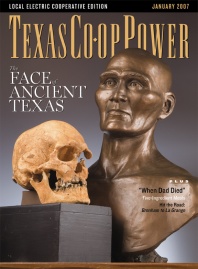The stars at night are big and bright …”
Given that opening, almost any schoolchild in the state knows what comes next: Enthusiastic, rhythmic clapping and the hearty chorus “… deep in the heart of Texas!”
That lively tribute to the Lone Star State’s wailing coyotes, blooming sage and the wide prairie sky, a rowdy counterpoint to the state song “Texas, Our Texas,” makes a fitting de facto state song of Texas. The official song, “Texas, Our Texas,” is appropriately reverential, but the tone is sober and pious, fitting the moods of school gatherings and political rallies, whereas “Deep in the Heart of Texas” is a robust tune suited for parties and campfires.
Most state songs are to music what a civics class is to history, and many have not aged well. “Deep in the Heart,” originally a popular U.S. chart-topper, which was exported all over the world during World War II, provides more upbeat public relations for Texas than any tourism organization ever could.
“Texas, Our Texas,” written in 1924, was adopted five years later, the year of the great stock market crash. “Deep in the Heart of Texas” came out the year Pearl Harbor was attacked and became ingrained in the national psyche. Here’s a test: Without looking it up, how much of “Texas, Our Texas” can you sing, versus “Deep in the Heart of Texas?” Likely, you could remember more of the popular song immortalized in records and movies than the official anthem.
“Deep in the Heart of Texas,” written by June Hershey and Don Swander, was initially recorded by Perry Como two days after Pearl Harbor. It became an immediate hit, spending five straight weeks atop Your Hit Parade in 1942, and quickly became a popular culture staple. Within the year, Hollywood latched on to its popularity with a movie that included the title tune sung by Tex Ritter. Gene Autry also sang it in the film “Heart of the Rio Grande,” which also came out in 1942, and that version is considered the definitive recording.
I remember hearing the song for the first time while seeing a movie. I think it was being sung by a group of soldiers on a train. It was a lively and festive scene that imprinted on my youthful mind, which is the power of the song with its montage of colorful imagery punctuated by loud clapping.
The song was popular in Hollywood and showed up in many film scores, predictably in a passel of Westerns. However, its pop culture power has also been displayed in films as varied as “The Teahouse of the August Moon” and “Pee-wee’s Big Adventure.” In that movie, which involved the title character traveling to the Alamo on a quest to recover a stolen bicycle, one scene emphasizes the song’s identity with the state. To prove to a friend on the telephone that he is indeed in Texas, Pee-wee sings the first verse, and, sure enough, passers-by respond with four claps and an enthusiastic chorus of “… deep in the heart of Texas.”
Jay Johnson recorded a version that features acoustic guitars, congas, chimes and softly brushed drums, and some attempted poetic chutzpah in the revised lyrics:
“Deep in the heart of Texas a campfire whispers softly in the dawn morning coming on.
Footsteps of the fawn falls behind his mother in the quiet of the trees.
And deep in the heart of Texas, there’s shelter in the breeze.”
Personally, I’ll take my original Texas song lyrics neat, and hold the congas.
Any number of factors account for why some songs hit the target with the public and others miss the mark, but it is interesting to note that before Hershey and Swander wrote “Deep in the Heart of Texas,” they wrote two songs about Albuquerque — “Ridin’ Down the Trail to Albuquerque” and “Albuquerque,” both showcased in movies, and neither came within a West Texas mile of doing for that town what “Deep in the Heart of Texas” has done for the Lone Star State. How a song titled “Deep in the Heart of New Mexico” might have fared is anybody’s guess.
Larry Tritten, who lives in San Francisco, wrote about the National Museum of the Pacific War in Texas Co-op Power’s April 2006 issue.


